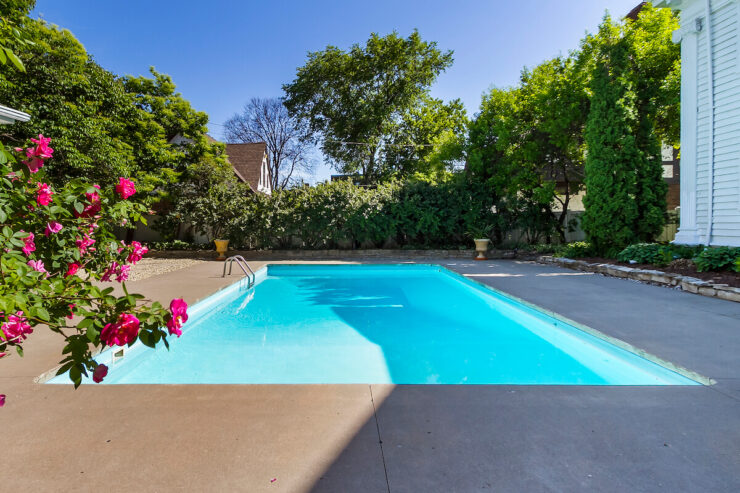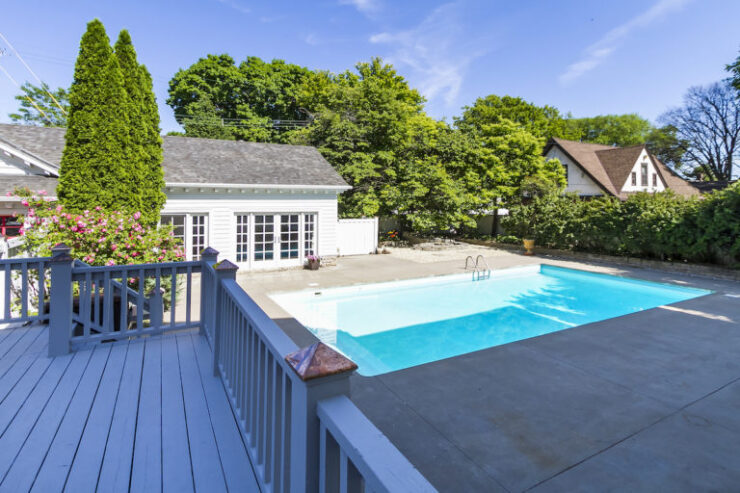Imagine being able to walk out into your backyard on a hot August day and jump right into a swimming pool to cool off. You wouldn’t have to worry about E. coli outbreaks or algae blooms that can spoil the joy of city lakes and beaches. You wouldn’t even have to leave your backyard to float on your back and look at the clouds.
The chance for a daily swim was part of the allure that persuaded writer Annette Schiebout to purchase a house with a pool two years ago. “I’m a mermaid myself,” she said. “I’d like to swim every day.”
In the past, Schiebout had enjoyed living in a condo that had a pool as one of its amenities and going for a swim became part of her regular routine. So, when she came across a gorgeous Colonial Revival home designed by Harry Wild Jones in the Whittier neighborhood, the pool stood out as an attractive amenity.
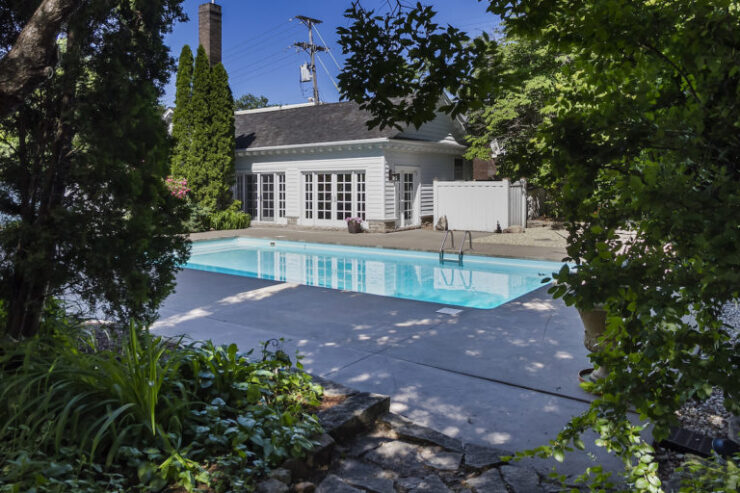
Little did she know what she was signing up for. “I didn’t actually know how expensive it would be to maintain,” Schiebout said. “I figured I would figure it out.”
The house had sat on the market for two years without being winterized when Schiebout moved into it in September 2017. When she got a pool inspection before she closed on the house, the pool inspector initially thought the pump wasn’t working and would cost $10,000 to fix. “Turns out the pump was fine — it was just so stuffed with debris that it wasn’t working,” Schiebout said.
Which was great, except she had to spend hours and hours with a mini-vacuum cleaning the filter at the bottom of the pool. “I just felt like a crazy person almost,” she said. “I remember Memorial Day weekend last year,
I spent 200 trips with this vacuum thing.”
Once she finally got the filter clean, Schiebout had to pay a pool company, called Poolside, about $300 a month to visit the house every other week, vacuum the filter and help maintain the chemicals.
She also had to drive out to Roseville to get her water tested regularly. Add to that skimming the pool’s surface, which could take up to 3–4 times a day, plus vacuuming the bottom of it. Oh, and replacing the lights, and the pool heater, which died last August. “It was a lot of work,” she said. All told, she spent about $2,500 to get the pool up and running in the first year, and $1,000 to maintain it the second.
Costs and maintenance
Joe Kelley, who owns Brooklyn Park-based Shamrock Pools, said that like owning a car, good maintenance is key to pool ownership. “What car is going to last longer? It all depends on how it’s maintained,” he said.
Among the costs involved in owning a pool include opening and closing, which costs about $250–$300, plus additional cleanup if necessary, Kelley said. Add to that the cost of electricity, which he tells people is usually about $50 per month, and gas for heating, which can vary widely. “I’ve seen people spend $100 a month in gas; I’ve seen people spend $1,000 a month in gas,” he said. It all depends on how warm you like the water and what the temperature is outside.
Other costs depend on factors such as what type of pump you have, and if there are trees around the pool.
A key part of maintenance is making sure the chemicals are balanced. “The better you maintain your chemicals, the less problems you are going to have,” Kelley said. Cleaning filters is also a necessary evil, he said, as is vacuuming your pool floor.
The number one mistake he sees pool owners make happens in the fall. “The kids go back to school, and people ignore their pool,” Kelley said. “So then, they get ready to winterize it, and it’s gone into a swamp because it wasn’t a priority in their life.”
An automatic pool cover can help with this problem, though that bears an additional upfront cost. With automatic pool covers, debris from trees lands on them, rather than in the water. “You don’t get the photosynthesis in the water, which causes the algae to grow,” Kelley said.
Meanwhile, different liners have different age spans. According to Kelley, a vinyl liner will last 8–12 years, while a plaster pool can last closer to 15 years. But, if the pH is low, the gases in the water can eat the concrete. “Like anything, good maintenance adds to longevity,” Kelley said.
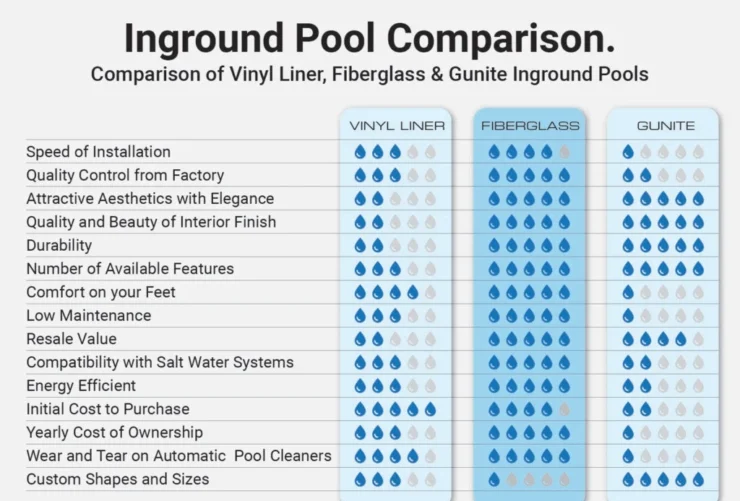
Kelley encourages pool owners to ask questions if they aren’t sure of something. He said, “The only dumb question is, ‘Why do I have to pay so much money because I was afraid to ask a question?’”
Ultimately for Schiebout, all of the pool costs and maintenance were a bit too much. She put her house on the market (because of the pool, as well as other personal factors) this summer through Lakes Sotheby’s International Realty and found a buyer quickly.
Schiebout was able to share all the little tricks and quirks of how to maintain the pool properly with the new owners. She said they seemed grateful for her tips and excited to share the pool with their family.
For herself, Schiebout did enjoy the pool, at least for a time. “There was nothing better than having a cup of coffee in the morning and jumping in the pool. Or night swimming, looking at the skyline,” she said. “It’s been great, but I’m glad to be done.”
The ‘pro-pool person’ prevails
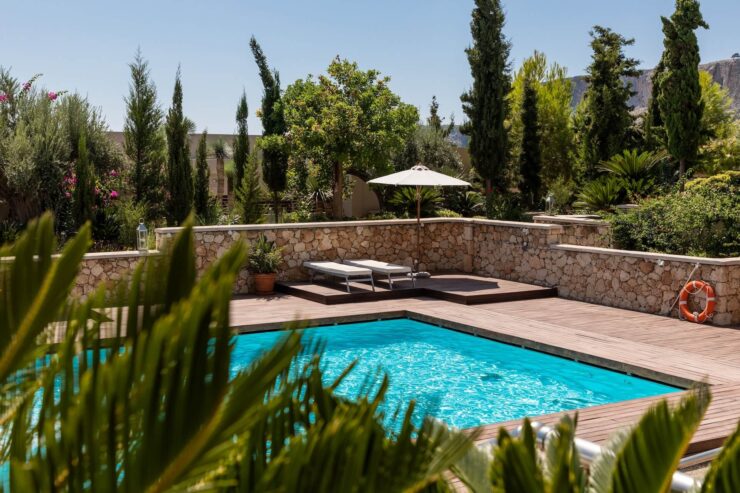
Owning a pool is a bit of a luxury, especially in Minnesota, where there are only a few months out of the year when you can use it. Minnesota has more than 30,000 in-ground pools, according to PK Data, though a 2014 study tracking pool companies per capita found it to be the least “pool-loving state” in the nation.
Kelley has an answer for pool-averse Minnesotans.
“Most people say, ‘Jeez, we have such a short swimming season,’” he said. “The reality is we have almost the same swimming season as 90% of the country plus or minus maybe a month.”
James and Suzanne Greenawalt have had a pool since they moved into their home near Lake Harriet 23 years ago. At that point, the couple’s children were young, so the pool was a selling point. Now their grandchildren enjoy the pool when they visit, which is another plus.
But after so many years of use, the pool had been falling apart.
“Last year was tough, because of the condition of the pool,” James Greenawalt said. “The liner had gotten so bad it kept losing water at the end of the day.” He said the pool ended up having 19 leaks in the liner, which shut down the pool for a while.
Greenawalt said they were faced with the decision about whether to get rid of the pool or fix it up. Greenawalt characterized himself as generally anti-pool and his wife as pro. “The pro-person prevailed,” he said. “We fixed it up.”
They installed a new liner and heater and repaired the steps that lead into the pool. In the end, Greenawalt said, he’s happy with how the renovation turned out.
Among the annual tasks pool owners should expect, he said, include opening the pool (usually after Memorial Day) and running the filter so the water gets to the right pH level.
Depending on how much you use it, you also should do a process called backwashing, which cleans up your pipes. And then, at the end of the year, you need to drain the pool and add more chemicals.
The Greenawalts’ repairs cost between $12,000 and $13,000 last year. Normally, the annual maintenance adds up to a little over $1,000. In addition, they pay a bit more for home insurance to have the pool covered.
Despite all this, Greenawalt acknowledges that the pool brings his family happiness, even if it is unwise to consider the cost per swim.
“My wife does enjoy the pool; she’ll go every day if she can,” he said. “And my grandchildren will come 2–3 days a week in the summer. That’s what makes it good.”

